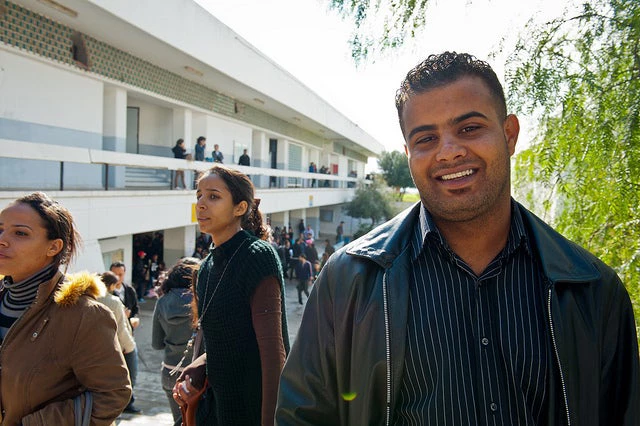
The last 15 years have witnessed the largest global expansion of tertiary education in recent history due to a 60 percent growth in student enrollment. India’s performance is even more dramatic—tertiary education expanded almost a spectacular threefold, from 8.4 million students in 2000-01 to 23.8 million in 2013-14. The number of tertiary education institutions has also increased significantly.
As Devesh Kapur and Pratap Mehta indicate, nearly seven colleges have opened daily in India over this period. As World Bank studies show, students today prefer professional education. In 2008, only 25 percent of tertiary education students opted for technical education; today nearly 50 percent are enrolled in these programmes. And importantly, the overwhelming majority of India’s tertiary level students study in private unaided colleges. Over the past decade, access to tertiary education has become more equitable across all categories—caste or income—though not so across regions and gender. Less positively, the quality of education imparted is mixed, and complaints about its relevance to changing labour market needs and employability issues are ubiquitous.
India is not alone in this predicament. It faces many of the same challenges that other countries face when enrollment in tertiary education rises rapidly. These include low levels of student learning and employability, weak research opportunities, and limited innovation.
Three key factors constrain learning and employability in India: low levels of student preparation for college; high faculty vacancies and little autonomy in institutes. While government efforts have led to more students completing secondary education, many of them are just not prepared for college. A large number lack the skills—low academic preparation, inadequate language capabilities, little socio-psychological readiness—needed to succeed. Secondly, as regards the shortage of faculty, in the average government engineering college, vacancies can be as high as 45-50 percent. While colleges tend to cover this gap with guest faculty, even students in top-notch colleges find they have no regular teacher. Thirdly, many government colleges and private colleges affiliated to state universities have little autonomy. This means they have little say in determining goals and priorities—in selecting leaders, deciding faculty appointments or research priorities, on designing the curriculum, structure and content of programs and examinations. With little flexibility in determining what students learn, they cannot equip students with the skills needed by a changing industry.
Next, most colleges have little resources to conduct research. Private engineering colleges—forming the bulk of the sector—seldom have the money to invest in research, and their affiliating universities rarely have the facilities to encourage institutes to collaborate. Moreover, when compared to other countries, Indian industry has underinvested in R&D in technical institutes due, among other factors, to the weak enforcement of intellectual property rights. This is exacerbated by an overall lack of opportunities for student mobility and faculty exchanges.
But, change is within reach. Take, for example, India and the World Bank’s nearly 15-year collaboration under the Technical Education Quality Improvement Project (TEQIP) that sought to improve quality of technical education. Participating colleges were helped to develop their academic and non-academic programmes so that students, especially first-generation college-goers, could improve employability. A study by Rudraksh Mitra et al shows how the establishment of placement cells in TEQIP-funded colleges improved students’ work-readiness through closer collaboration with industry and through focus on soft-skills, like oral communication, teamwork and time management. Students are encouraged to take tests to identify areas of deficiency, and cells organise talks on employability, conduct pre-placement tests, group discussions and interview sessions.
Also, colleges in TEQIP are expected to become autonomous. As observed, autonomy, along with collaboration with IITs and IIMs, has helped them improve their research and innovation capabilities. The third phase of TEQIP supports affiliating universities as well. They will be required to build research facilities for use by affiliated colleges (including private colleges).
While we have focused on technical education, this is not the only area worth investing in. For, no advanced economy trains only engineers or doctors. It also prepares educators, administrators, social scientists, lawyers, historians, philosophers etc. A comprehensive improvement of the overall tertiary education system in India is viable and sorely needed. The government, employers and society concur that improving tertiary education is essential to marshall India’s human resources and position the country as a hub of human capital for future growth.
This blog post originally appeared in Outlook India magazine on June 5, 2017.
Find out more about World Bank Group Education on our website and on Twitter .



Join the Conversation